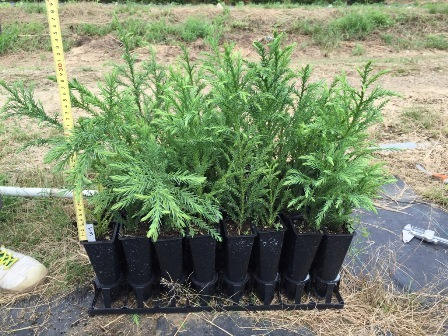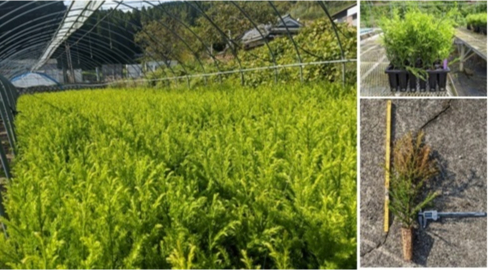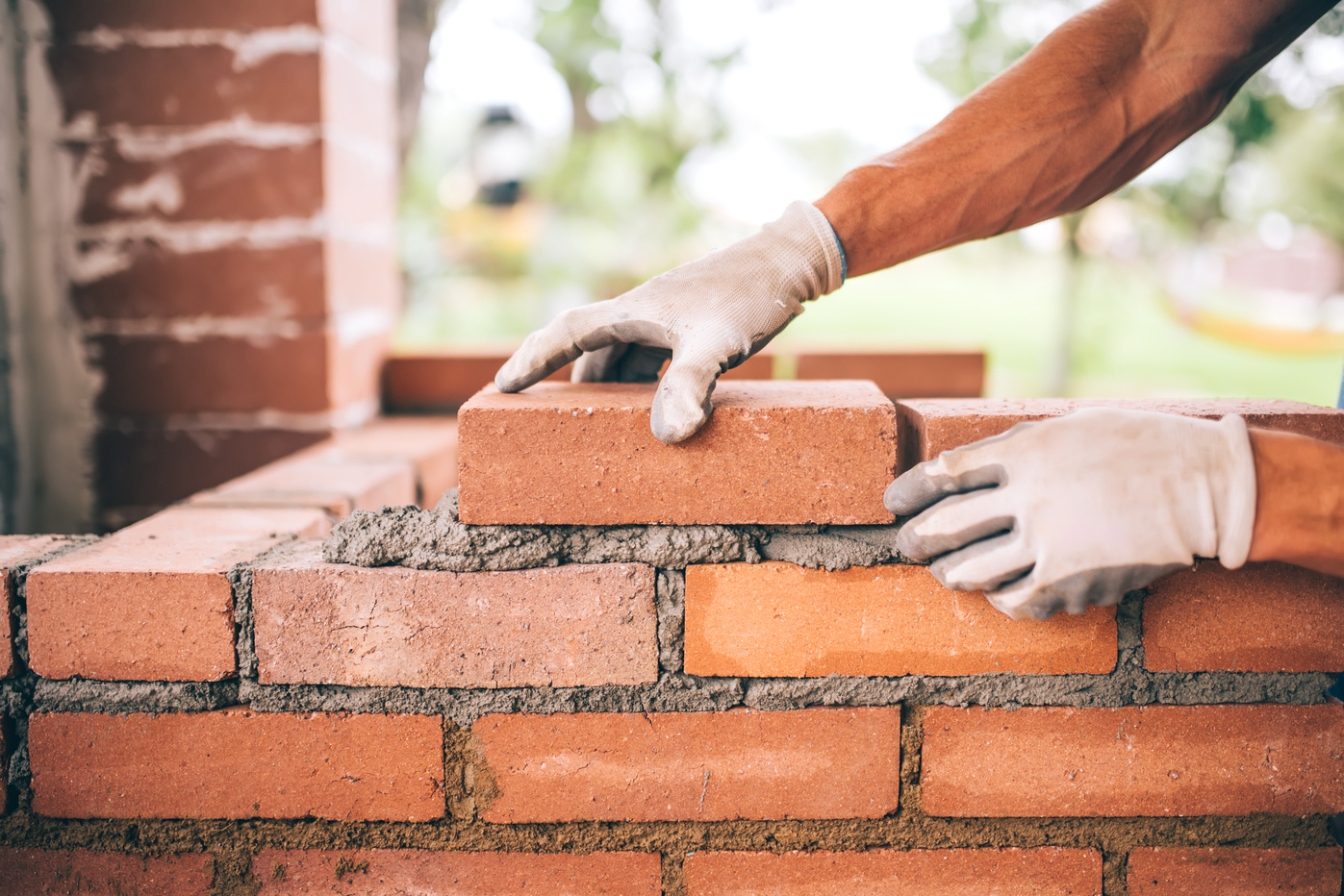J-STORIES – There are ordinary trees. Then there are elite trees. At least, in terms of special properties. Elite trees are special saplings selected by the Minister of Agriculture, Forestry and Fisheries (MAFF) from about 9,000 of the best cedar, cypress and larch trees grown in artificial forests.
These trees got the “elite” tag for their ability to absorb 1.5 times more carbon dioxide. They will help accelerate forest carbon sink measures, or the amount of CO2 absorbed by forests. Elite trees boast high rigidity that is suitable for timber use, and produce less than half of pollen amount, which is good in combating hay fever. They are expected to reduce the amount of undercutting and shorten the felling process, which will reduce labor and costs. To strengthen pollen control, MAFF aims to increase the number of elite trees to 30% of forestry seedlings by 2030 and to more than 90% by 2050.
Regular Japanese cedar and cypresses, the most abundant trees in Japan, reach maturity in about 40 years, after which their ability to absorb CO2 declines. According to the Forestry Agency in Japan, more than half of Japan's planted forests are already over 50 years old. If forests continue to age at this current rate, they will become less effective at deoxygenating the atmosphere. The situation is critical to achieving carbon neutrality by 2050.

Nippon Paper Industries, which owns 90,000 hectares of company-owned forests in Japan, became the first private company to begin mass production and sales of the elite tree seedlings.
.jpg)
In October 2023, the company qualified as a business operator in six prefectures (Akita, Shizuoka, Oita, Hiroshima, Tottori, and Kumamoto) and opened seed and scion collection orchards. The company plans to establish a system to produce 10 million elite tree seedlings per year by the end of FY2030.

The company is also involved in overseas afforestation projects. In Brazil, a method for selecting superior trees based on DNA analysis of eucalyptus trees in a Brazilian afforestation area is now in the practical stage. In the future, the company intends to expand this breeding technology to Southeast Asia and other regions. The company will also promote efforts to increase the efficiency of papermaking raw material procurement and decarbonization efforts to increase CO2 absorption around the world.
Translation by Tony McNicol
Editing by Desiderio Luna
Photos provided by Nippon Paper Industries
For inquiries about this article, please contact jstories@pacificbridge.jp
***
Click here for the Japanese version of the article.




![[Podcast] Japanese technology to supercharge human fertility (Part 4)](https://storage.googleapis.com/jstories-cms.appspot.com/images/1768443226894unnamed-5_bigthumbnail.jpg)

![[Podcast] Japanese technology to supercharge human fertility (Part 3)](https://storage.googleapis.com/jstories-cms.appspot.com/images/1766558713084place-for-scientific-research-2025-03-07-14-08-49-utc%20(1)_bigthumbnail.jpeg)
![[Interview: Part 2] A digital approach to tackle child hunger in Japan with dignity](https://storage.googleapis.com/jstories-cms.appspot.com/images/1766130666509unnamed_bigthumbnail.jpg)
![[Podcast] Japanese technology to supercharge human fertility (Part 2)](https://storage.googleapis.com/jstories-cms.appspot.com/images/1765863548035unnamed-7_bigthumbnail.jpg)
![[Podcast] Japanese technology to supercharge human fertility (Part 1)](https://storage.googleapis.com/jstories-cms.appspot.com/images/1765440905082unnamed_bigthumbnail.jpg)
_bigthumbnail.jpeg)



![[Interview] When digital and physical worlds meet](https://storage.googleapis.com/jstories-cms.appspot.com/images/1747974430456unnamed-2_smallthumbnail.png)

![[Interview] How Japanese musician Grover turned his passion of ‘sound’ into a health-tech startup](https://storage.googleapis.com/jstories-cms.appspot.com/images/1746181078493R7__1407_smallthumbnail.jpg)


_smallthumbnail.jpeg)

![[Interview: Part 1] From nourishing souls to feeding the hungry](https://storage.googleapis.com/jstories-cms.appspot.com/images/1763695595492unnamed_smallthumbnail.jpg)

